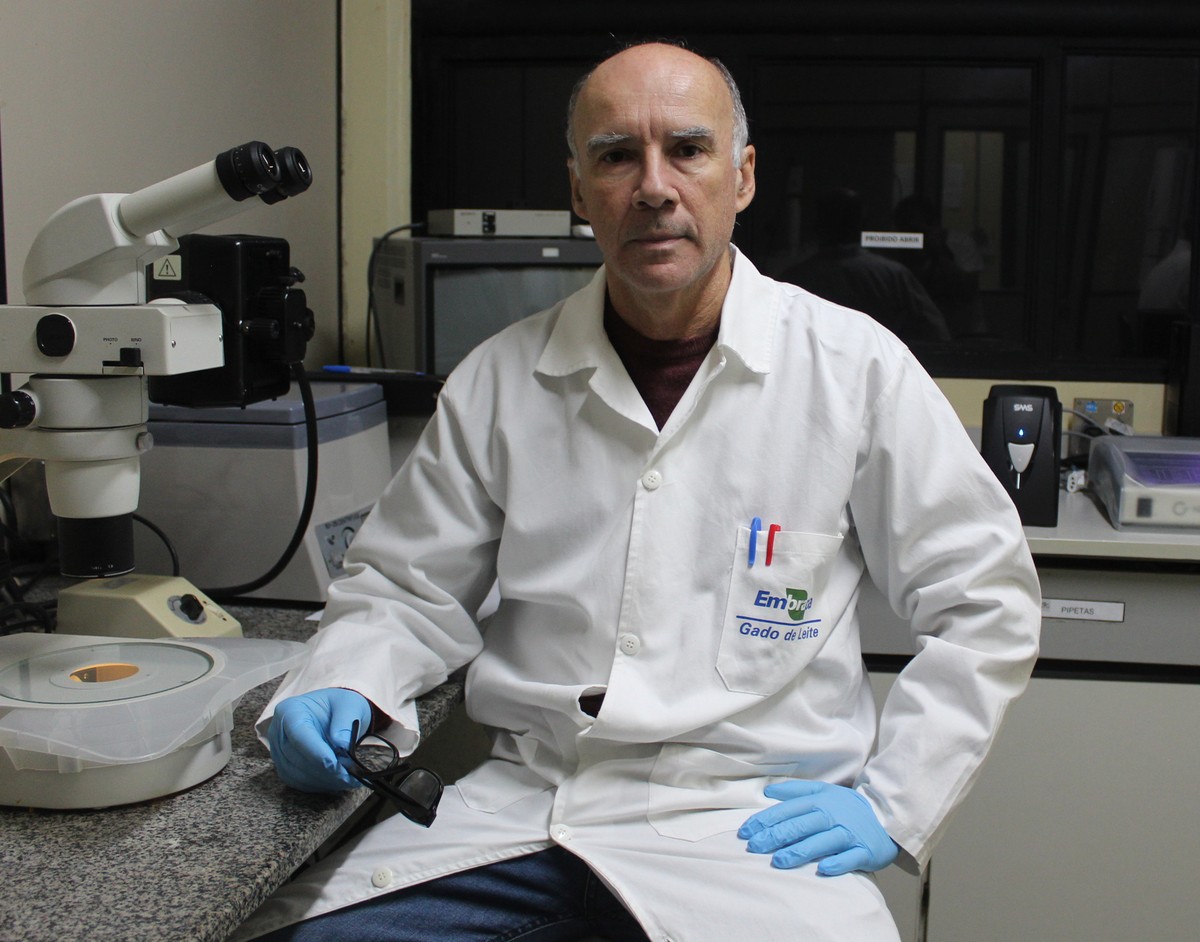Boneless tambaqui, tilapia with 40% more meat, hypoallergenic cow’s milk, and heat-resistant Scottish Angus cattle. Changes in livestock that would take decades to occur naturally—or perhaps not at all—are already being field-tested in Brazil thanks to gene editing, a technique that allows scientists to modify DNA sequences. Some of these research results are expected to reach the market later this decade.
The Brazilian Agricultural Research Corporation (Embrapa) has been using the technology known as “CRISPR,” an acronym for “clustered regularly interspaced short palindromic repeats,” says Alexandre Nepomuceno, general manager of Embrapa Soybeans. This technique uses a complex of RNA (ribonucleic acid, the molecule responsible for protein synthesis in the body’s cells) and proteins to search for the desired DNA sequence, cut it, and modify it. “Gene editing is consolidating itself as a key tool for increasing agricultural productivity, adapting animals to the effects of climate change, and reducing the impact of diseases in livestock,” he says.
At Embrapa’s fisheries and aquaculture arm in Palmas, two lines of research are underway with tambaqui. One focus is developing boneless fish to facilitate meat processing. Another is seeking fish with larger muscles. In partnership with the Santa Catarina State Agricultural Research and Rural Extension Corporation (Epagri), the Embrapa unit is also testing gene editing for increasing muscle gain in tilapia.
Tambaqui was chosen because it is the main native species used for aquaculture. Fernanda Loureiro de Almeida O’Sullivan, deputy head of research and development at Embrapa’s fisheries and aquaculture arm, says the research involves editing a chain of genes involved in the calcification of intermuscular tendons. As the tambaqui grows, these tendons calcify, giving rise to the spines.
“Each species reacts differently to the spine deletion. The carp did not lose swimming ability. There was initial difficulty [for the fish] rising to the surface to eat dry food, but then [the carp] adapted. In other species, there was no reduction in swimming ability,” says Ms. O’Sullivan, who cites similar Norwegian research.
To develop fish with larger muscles, gene editing involves neutralizing the gene that regulates myostatin, which controls growth. “In the case of tambaqui, research takes longer because the fish reaches sexual maturity at two years of age. Tilapia, on the other hand, enters the reproductive phase at six months,” says Ms. O’Sullivan. She adds that the animals were developed in a laboratory, and that genotyping tests have already confirmed the genetic mutation. Now, it’s necessary to monitor the animals’ growth and reproduction to determine whether the change will be passed on to future generations.
Embrapa’s dairy cattle arm, in partnership with the Angus Breeders Association, developed a pair of Angus calves adapted to the tropical climate using gene editing in Juiz de Fora, Minas Gerais State. “These animals are highly productive and produce high-quality meat, but they cannot tolerate extreme heat. We proposed producing animals with shorter hair. The gene that determines short hair is found in breeds that naturally develop this trait,” says Luiz Sergio de Almeida Camargo, a researcher at Embrapa’s dairy cattle arm.
The calves were born with short hair, which improves heat tolerance compared with long-haired animals. The researchers produced 16 embryos, which were implanted into 16 cows in June 2024. Six pregnancies progressed, but one did not reach term. Five calves were born, two of which had short hair and 74% and 83% editing in genome. “We need to spend more time in the laboratory to increase the efficiency of gene editing,” says Mr. Camargo.
According to him, with natural crossbreeding, it would take five to six generations to achieve the same trait obtained with gene editing. “We’ll choose the best animals to produce ten or twelve animals next year. And from this population, we’ll produce the first generation of breeding stock,” he says.
Mateus Pivato, executive director of the Angus Breeders Association, says researchers will produce more gene-edited animals to expand the lineage and then crossbreed these animals. “We’ll test the real impact of the technology through this crossbreeding and also assess its impact on ectoparasite resistance,” he says. The research is expected to last five to six years. Working with Embrapa Pecuária Sul, the association is also developing animals that gain more weight while eating less and even animals that emit less methane gas.
Another laboratory study at Embrapa’s dairy cattle arm involves breeding cows with DNA mutations to produce animals that produce milk without the beta-lactoglobulin (BGL) protein. This product will be suitable for those allergic to milk protein.
In the pig farming industry, the Pig Improvement Company (PIC), a subsidiary of the British company Genus, has developed pigs resistant to Porcine Reproductive and Respiratory Syndrome (PRRS). The disease causes premature death and increases the need for antibiotics by 200%. In the U.S., according to the company, the disease generates losses of $1.2 billion per year.
“Essentially, the technology disables a segment of DNA that allows the virus to bind to the animal’s cells and begin reproducing. It’s a mutation that occurs sporadically and involuntarily in nature,” says Alexandre Rosa, CEO of Agroceres PIC.
PIC has filed an application for approval in the main swine-producing countries, including Brazil. The technology has already been approved in Brazil in 2024, in the U.S. in April of this year, and has also received approval in Colombia, Argentina, and the Dominican Republic. China, Canada, and Mexico are in the final stages of reviewing the application.

